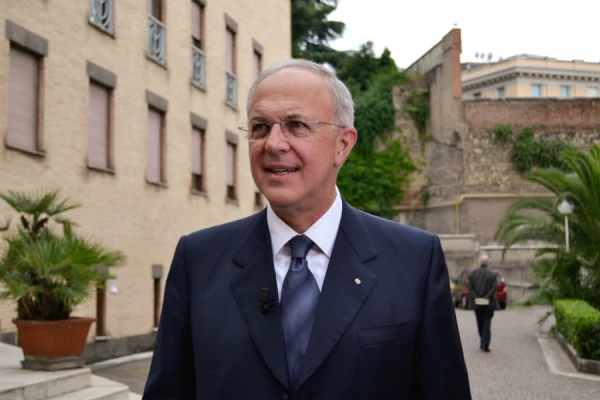
CNA Staff, Feb 11, 2021 / 04:15 am (CNA).- The world’s largest Gothic altarpiece is once again dazzling visitors to a Catholic basilica in Poland following a six-year restoration project.
Scaffolding was cleared away this month after conservators concluded their work on the wooden altarpiece at St. Mary’s Basilica in Kraków, which features more than 200 sculpted figures.
The Bavarian sculptor Veit Stoss created the vast altarpiece depicting the Dormition and Assumption of the Blessed Virgin Mary between 1477 and 1489.
The basilica announced the completion of the restoration works in a Feb. 1 update on its website. There will be an act of thanksgiving on Aug. 15, the feast of the Assumption.
Msgr. Dariusz Raś, the pastor of St. Mary’s Basilica, said: “This altar is obviously a cultural heritage, but for us believers, above all, it presents the most beautiful moments in Mary’s life, known to us from the Gospel — and not only.”
“It is also a great work of art related to the late Gothic period, where you can already see elements characteristic of the Renaissance.”
The altarpiece fashioned by Stoss — known in Poland as Wit Stwosz — is classified as a pentaptych. It consists of five parts: a central panel with sculptures, a pair of opening internal wings, and another pair of fixed external wings. When fully opened, it is more than 40 feet high and 35 feet wide.
The central scene shows the Dormition and Assumption of Mary in the presence of the 12 Apostles. Above the central panel, there is a depiction of the coronation of Mary, flanked by St. Stanislaus and St. Adalbert of Prague.
The altar is constructed from three types of wood: oak for the main structure, larch for the background, and linden — a light, soft wood — for the figures.
When the altarpiece is closed, panels showing scenes from the lives of Jesus and Mary are visible.
Raś said that the restoration was completed after six years of “painstaking research and conservation work.”

An expert assessment of the altarpiece in 2011-2012 concluded that it was in a stable condition but at risk of damage. The Inter-Academy Institute of Conservation and Restoration of Works of Art made a detailed 3D laser scan in 2013.
The delicate restoration project began in 2015. During the works, an inscription was discovered on the main group of figures proving that it was completed in 1486, three years earlier than previously thought.
Workers also found the inscription of a carpenter working at the altar in 1957 during a previous renovation project.

The altarpiece has undergone several restorations in its more than 500-year existence. It has also been caught up in Poland’s turbulent history.
During the Nazi occupation of Kraków, the altarpiece was taken apart and shipped to Germany. It was discovered in 1946 in the basement of Nuremberg Castle. It was returned to Poland and carefully reassembled at the basilica following major renovation work.

St. Mary’s Basilica is located in Kraków’s Main Square and is famous for its daily trumpet call, which breaks off abruptly, reputedly in memory of a trumpeter who was shot in the throat while sounding the alarm ahead of an attack on the city.
The basilica is associated with St. John Paul II, who served as a confessor at the church before he was appointed an auxiliary bishop of Kraków.
“We still have a confessional in which Fr. Karol Wojtyła confessed,” said Msgr. Raś.
“We use it for confession only on holidays. It is carefully respected and marked by us. We call him a silent witness to so many confessions of John Paul II.”

He added: “We invite everyone to St. Mary’s Church as soon as the inconvenience caused by the pandemic is over. It is worth seeing this unique monument in the world.”

[…]





